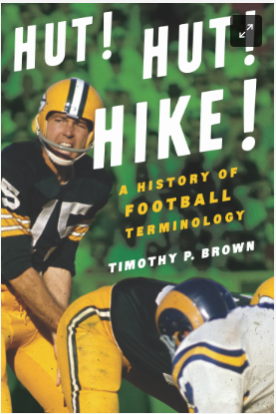Lance Parrish A Look At His Baseball Legacy
Parrish's journey began with the Detroit Tigers in 1977. Quickly establishing himself as a force to be feared offensively, he earned six Silver Slugger Awards, highlighting his consistent power hitting. He clubbed over 300 home runs and drove in more than 1,000 runs throughout his career. However, Parrish was more than just a slugger. He also displayed a keen understanding of the game, calling pitches with intelligence and guiding young pitchers through their development.
Born June 15, 1956, in Clairton, Pennsylvania, was legendary MLB catcher Lance Parrish. Lance was a an eight-time All-Star, a three-time Gold Glove fielder, and won baseball's Silver Slugger award six-times.
He was a member of the Detroit Tigers organization for 10 seasons, even helping them to win the 1984 World Series. Parrish also played for the California Angels, Philadelphia Phillies, Pittsburgh Pirates, Cleveland Indians, and the Toronto Blue Jays at the latter portion of his career in the Big Leagues.
Defense was another hallmark of Parrish's game. His work ethic and dedication to his craft earned him three Gold Glove Awards. He was a master of game-calling, a skilled strategist who anticipated hitters' moves and orchestrated the defense accordingly. Parrish's ability to handle a potent pitching staff like the Tigers' in the early 1980s was crucial to their success.
Lance had 324 career Home Runs during his tenure in the MLB.
Ruth hits his final 3 HRs in Pittsburgh
WPXI.com remembers that Babe Ruth walloped his final three dingers at Forbes Field in Oakland on May 25, 1935.
Jim Bottomley and His Enduring Baseball Legacy
Born in 1898 in Illinois, Bottomley's path to baseball stardom began in the semi-professional leagues. His talent was evident, attracting the attention of St. Louis Cardinals scout Charley Barrett. Bottomley quickly rose through the minor leagues, showcasing impressive hitting skills and a natural feel for the game. He debuted with the Cardinals in 1922, immediately establishing himself as a reliable contributor.
Bottomley, a player who wasn't known for his power-hitting, displayed a remarkable consistency at the plate. He achieved a coveted feat – batting over .300 – an incredible nine times throughout his 16-year career. His on-base percentage was consistently high, and he possessed a knack for driving in runs, leading the league in RBIs twice. He held the single-game RBI record (12) for 69 years, a testament to his clutch-hitting ability and unwavering determination.
Bottomley's value extended beyond his statistics. His leadership and temperament were invaluable to the team, earning him the nickname "Sunny Jim" for his positive attitude on and off the field. He was a key component in the St. Louis Cardinals' championship runs, contributing to the team's success and fostering a respectful and positive team environment. He won two World Series titles with the team in 1926 and 1931.
In 1928, Bottomley's season was awe-inspiring. He led the National League in home runs, RBIs, and total bases, earning him the coveted MVP award. While his postseason numbers weren't as stellar, his regular-season dominance cemented his place among the league's elite.
Bottomley's career extended beyond the Cardinals. He played for the Cincinnati Reds and St. Louis Browns before retiring in 1937. After playing, he remained in baseball, serving as a scout and minor league manager for the Chicago Cubs organization.
Lefty Grove A Dominant Southpaw and Pitching Legend
Lefty Grove, born Robert Moses Grove in 1900, was a left-handed pitcher who dominated Major League Baseball for 17 seasons. He carved his legacy with the Philadelphia Athletics and Boston Red Sox, etching his name in baseball history as one of the greatest pitchers ever.
Early Career and Rise to Prominence:
After excelling in the minor leagues, Grove joined the Philadelphia Athletics in 1925. He quickly established himself as a force to be reckoned with, leading the American League in strikeouts seven years in a row from 1928 to 1934. His exceptional control, combined with a devastating fastball and a sharp curveball, made him a nightmare for opposing batters.
Peak Years and Championships:
From 1927 to 1933, Grove enjoyed his most dominant stretch. He won at least 20 games in each of those seasons, while leading the league in earned run average (ERA) five times. Notably, he achieved the prestigious "Triple Crown" twice during this period, leading the league in wins, strikeouts, and ERA. This feat cemented his status as one of the best pitchers of his generation.
Grove's contributions were instrumental in the Philadelphia Athletics' success. He helped them win two World Series titles in 1929 and 1930, showcasing his ability to perform under pressure on the biggest stage.
Summary
Lefty Grove was a Baseball Hall of Fame pitcher MLB All-Star on 6 different occasions, was on the World Series winning team 1929 and 30, won the AL MVP in 1931, and the Triple Crown in 1930 and 31.
Lefty played for both the Philadelphia A's and the Boston Red Sox.
Grove is one of the top MLB players to have worn Jersey Number 10.
Emile Butch Bouchard Hockey Defensive Star
Bouchard was born in Montreal, Quebec, Canada, on September 4, 1919. He grew up during the Great Depression and didn't have the opportunity to play hockey until he was 16 years old. He learned to skate on rented skates and borrowed $35 from his brother to buy a complete set of hockey equipment.
Bouchard began his professional hockey career with the Verdun Maple Leafs of the Quebec Senior Hockey League in 1940. He was signed by the Montreal Canadiens in 1941 and made his NHL debut that same year.
Bouchard was a physical defenceman who was known for his strong skating and his ability to break up opposing plays. He was also a skilled passer and a threat to score from the point.
Bouchard was a key member of the Montreal Canadiens' dynasty of the 1950s. He won the Stanley Cup four times with the Canadiens (1953, 1956, 1957, and 1958) and was named to the NHL First All-Star Team three times (1945, 1946, and 1947).
Bouchard retired from hockey in 1956. He was inducted into the Hockey Hall of Fame in 1966.
Goose Gossage The Mustachioed Maverick Who Redefined Relief Pitching
A Fiery Fastball and Unwavering Grit: Drafted by the White Sox in 1970, Gossage's journey initially saw him bouncing between roles as starter and reliever. In the latter, he flourished, unleashing his signature heater – often exceeding 100 mph – and relying primarily on fastballs and a devastating slurve. While known for throwing at hitters, he only did it thrice intentionally.
From Chicago to Cooperstown: His dominance landed him in Pittsburgh, propelling him to stardom with the New York Yankees. With the Bronx Bombers, his fearlessness and late-inning heroics helped secure a World Series title in 1978. He continued his all-star caliber pitching, racking up saves for the Padres, Astros, and A's.
Born July 5, 1951, in Colorado Springs, Colorado, was Baseball Hall of Fame Relief Pitcher Rich "Goose" Gossage. Goose was a World Series Champion in 1978 as a member of the New York Yankees. In fact, he pitched for nine different teams, spending his best years with the Yankees and San Diego Padres.
Goose became perhaps one of the earliest versions of the prototypical modern-day clser, finishing off games with his signature fastball pitch. Gossage finished his MLB career as a nine-time MLB All-Star and a three-time AL saves leader. When he retired, he also ranked third in major-league career games pitched (1,002), and he remains third in wins in relief (115) and innings pitched in relief (1,5562⁄3); his 1,502 strikeouts place him behind only Hoyt Wilhelm among pitchers who pitched primarily in relief.
Larry Robinson Hockey Legend
Born June 2, 1951, in Winchester, Ontario, was Hockey Hall of Fame Defenseman, Larry Robinson. "Big Bird" as he was known, played for 17 seasons in the NHL with the Montreal Canadiens, and then tacked on three more with the Los Angeles Kings.
Robinson's Skateway to NHL Stardom
Robinson's path to stardom was familiar. Undrafted after a single year of junior hockey, he battled his way through the minor leagues before finally catching the Montreal Canadiens' eye. His arrival in 1973 marked the beginning of a legendary era for both player and team.
A-Pillar of the "Big Three": Robinson quickly established himself as a cornerstone of the Canadiens' defense. Alongside Serge Savard and Guy Lapointe, they formed the famed "Big Three," a defensive unit that revolutionized how the game was played. Robinson wasn't just a defensive stalwart; he possessed a potent offensive skillset, contributing significantly to the team's scoring.
Six Stanley Cups and Individual Accolades
The Canadiens dynasty of the 1970s wouldn't have been possible without Robinson. He was pivotal in securing six Stanley Cup championships with the team between 1973 and 1986. His accolades were equally impressive. He won the Norris Trophy, awarded to the league's best defenseman, a remarkable two times. A testament to his well-rounded game, he earned the Conn Smythe Trophy as playoff MVP in 1978.
Larry was also a well known former ice hockey coach, and executive after he hung up the skates. He was the head coach of the New Jersey Devils (on two stints), as well as the Los Angeles Kings. He was on six Stanley Cup champion teams, made six All-Star teams and won the 1977-78 Smythe Award as well as two Norris Trophies.
Leo Boivin Hockey Legend
Joe Tinker Baseball Hall of Fame Shortstop
-Road to Baseball Greatness
Tinker's journey began in the minor leagues, where his defensive prowess at shortstop caught the eye of the Cubs. He made his major league debut in 1902 and quickly established himself as a reliable fielder, earning the nickname "Stonehands Tinker" for his fielding brilliance.
But Tinker's value extended far beyond his glove. He developed into a capable hitter, batting over .260 for his career. More importantly, he knew the game, calling pitches with intelligence and guiding young players on the field.
However, Tinker's legacy is forever intertwined with that of his teammates, Johnny Evers at second base and Frank Chance at first. Together, they formed one of baseball's most legendary double-play combinations. Their flawless coordination and slick-fielding became a nightmare for opposing teams, earning them a place in baseball folklore through the immortalized verse, "Tinker to Evers to Chance."
Tinker's time with the Cubs was marked by success. He secured four National League pennants and two World Series championships (1907, 1908). After stints with Cincinnati and Chicago again, he retired in 1916, leaving a lasting impact on the game.
Joe Tinker wasn't a headline-grabbing superstar but the quiet force behind a championship team. His defensive mastery, consistent hitting, and on-field leadership were instrumental in the Cubs' golden age. He remains a testament to the vital role of "glue guys" in building a winning team.
-Legacy of Tinker
Born July 27, 1880, in Muscotah, Kansas, was Baseball Hall of Fame Shortstop Joe Tinker. This legend was a member of the World Series Champion 1907 and 08 Chicago Orphans/Cubs, played with Cincinnati Reds for a year before a stint in the Federal League, leading the Chicago Whales to a title, and later returned to the MLB as the player-manager of the Chicago Cubs.
With the Cubs, Tinker was a part of a great double-play combination with teammates Johnny Evers and Frank Chance that was immortalized as "Tinker-to-Evers-to-Chance" in the poem "Baseball's Sad Lexicon". However, Evers and Tinker feuded off the field. Tinker was elected to the National Baseball Hall of Fame in 1946.
Hank Greenberg Baseball HOF Detroit Tiger
Starting with the Detroit Tigers in 1930, Greenberg's prodigious power soon earned him his nickname. He clubbed 36 homers in 1935, leading the Tigers to a World Series title and claiming his first MVP award. But his success wasn't without shadows. As one of the few Jewish players in the major leagues, Greenberg faced anti-Semitic taunts and prejudice, which only fueled his determination to succeed.
In 1938, Hank's bat went nuclear. He smacked 58 home runs, just two shy of Babe Ruth's record, cementing his place as one of the game's greatest sluggers. He earned another MVP award and propelled the Tigers to yet another World Series appearance, proving his doubters wrong with every thunderous swing.
Greenberg's career saw its share of interruptions. World War II forced him to serve in the Navy, delaying his prime. Yet, upon his return in 1945, he led the Tigers to one more World Series victory, proving his fire still burned bright.
Beyond the statistics, Hank Greenberg's legacy transcends the game. He stood tall against bigotry, paving the way for generations of Jewish players. His on-field dominance, coupled with his unwavering spirit, made him a beacon of hope for millions, his every home run a defiant roar against discrimination.
Retiring in 1948, Greenberg remained involved in baseball as a team executive and advocate for youth sports. In 1956, he earned his rightful place in the Baseball Hall of Fame.



.jpg?https://jerseydispatch.com/pfeL/p/c312642c0431e75b485e432232c99c1c/website/Daily-Sports-Uniform-Number-History/February/February-8-Jersey-Numbers/Images/.Basketball_at_Pas-en-Artois,_France,_1918_(20166469838).jpg)
.jpg?https://jerseydispatch.com/pfeL/p/c312642c0431e75b485e432232c99c1c/website/Sports-History-Photo-of-the-Day/February-Images/February-8-Image/images/.640px-Arctic_Sisterhood_Basketball_banner,_Nome_(NOWELL_200).jpg)





